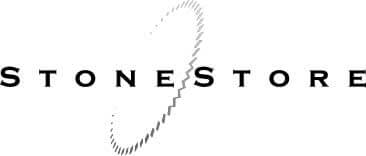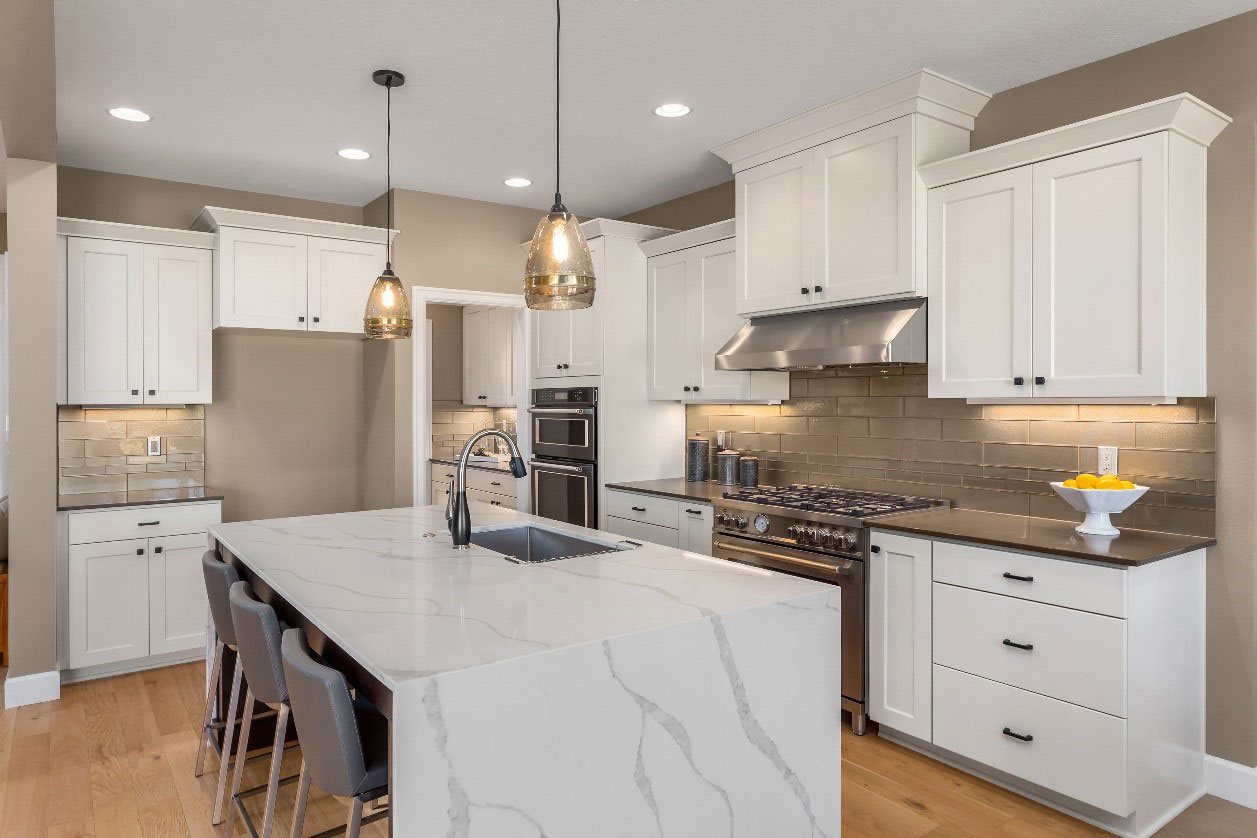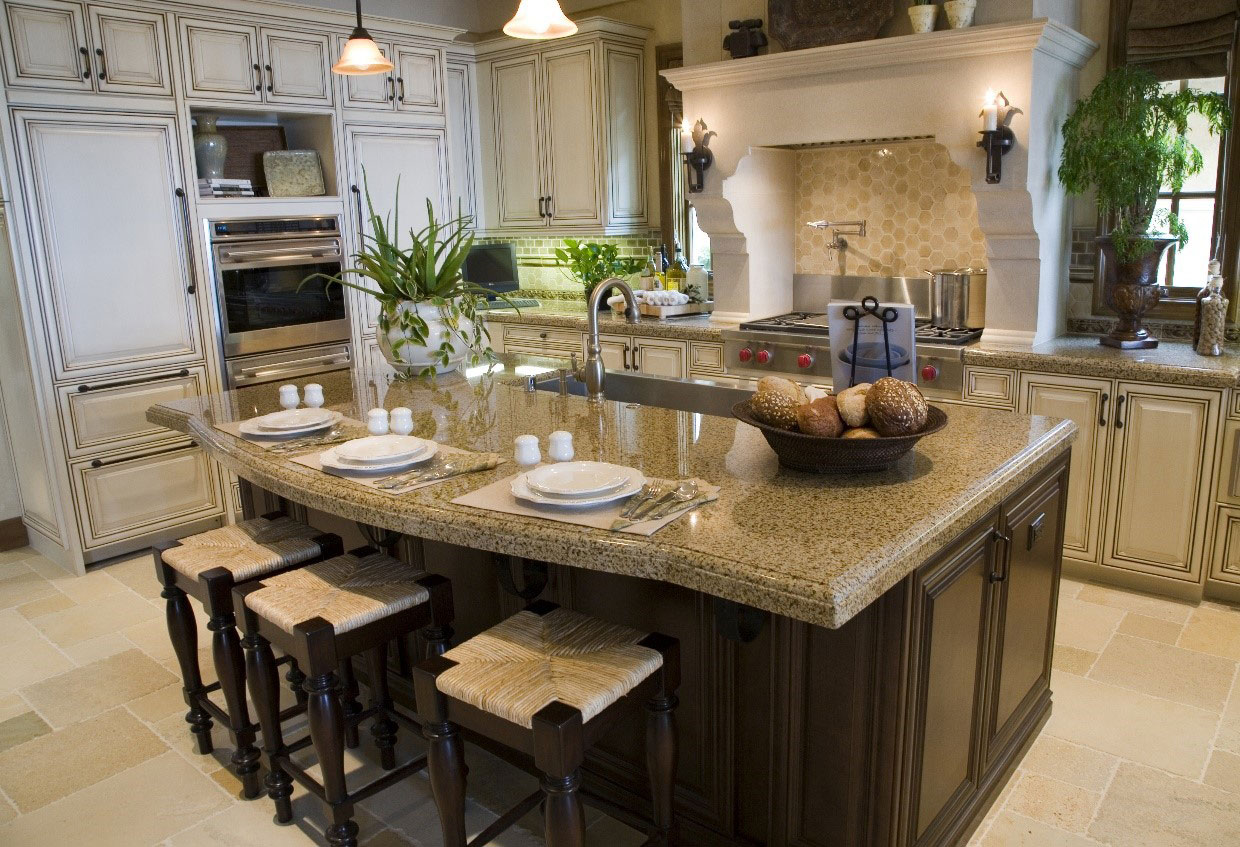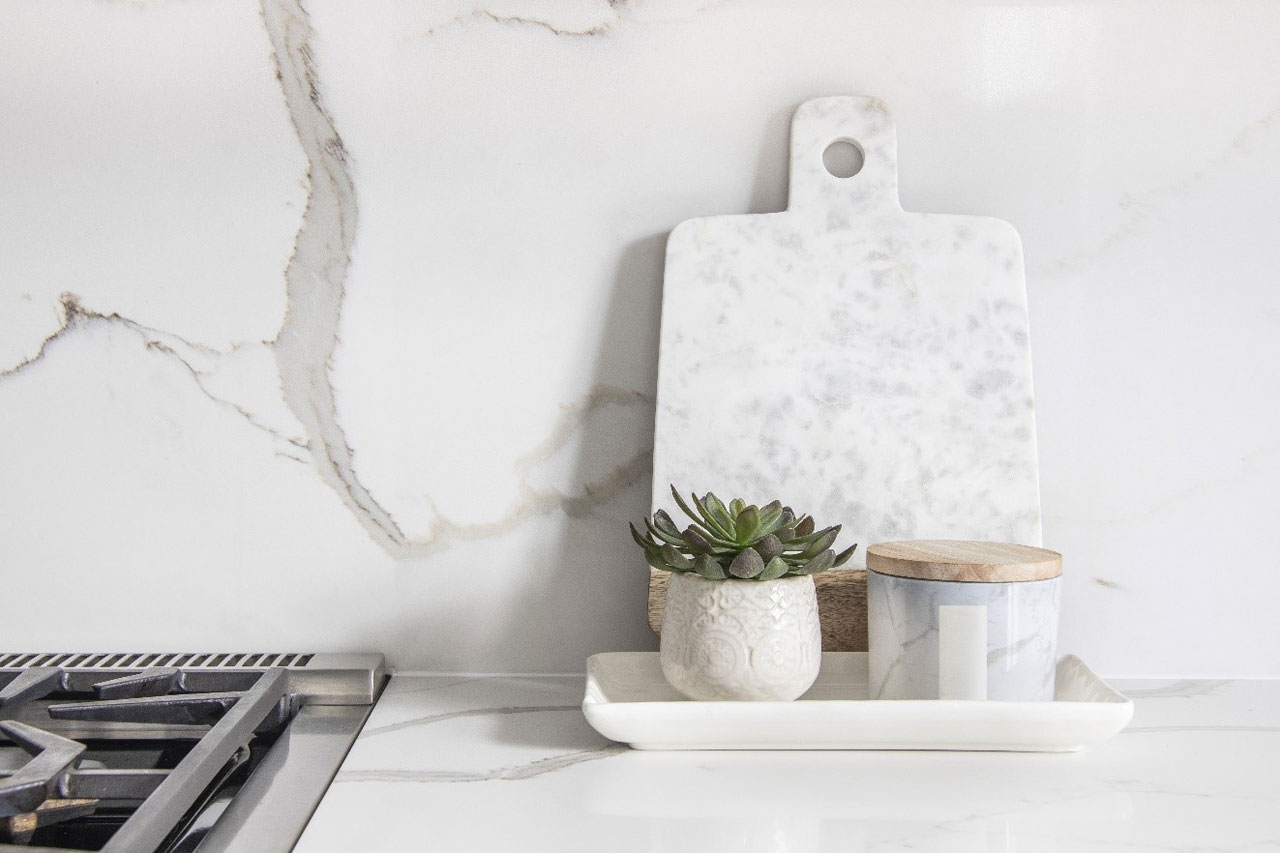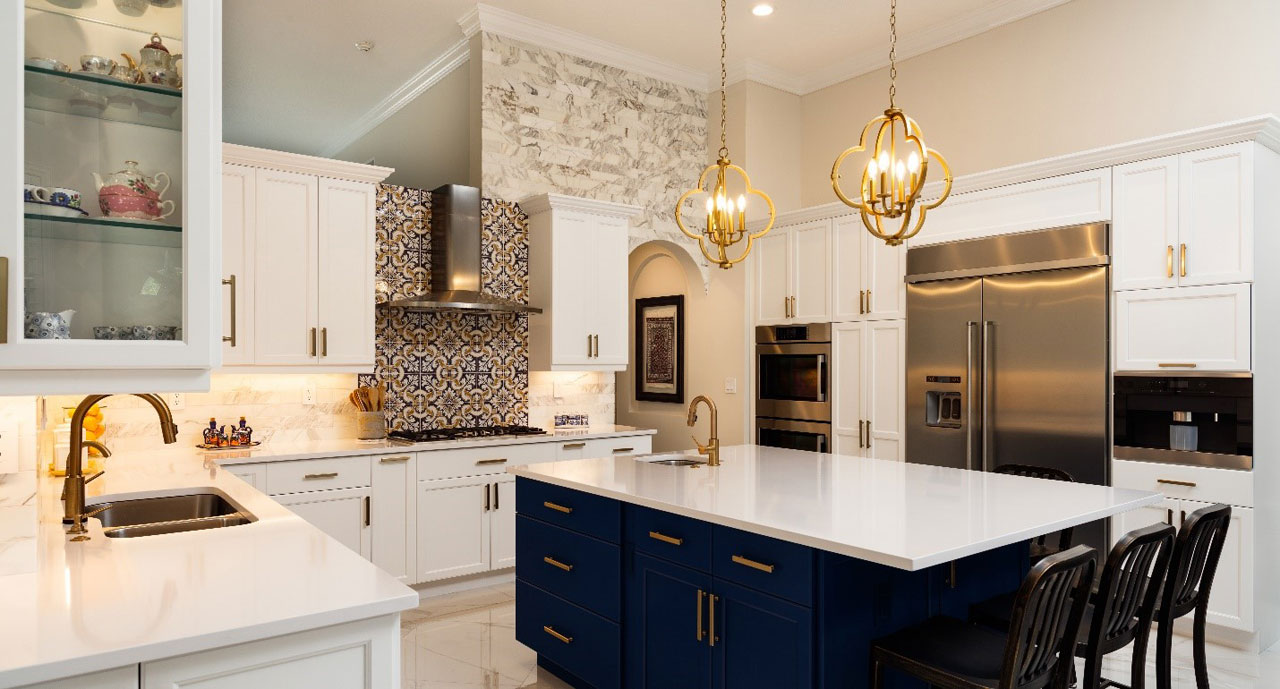Backsplashes
Kitchens and bathrooms tend to see a lot of traffic. A small detail such as backsplash, can make these rooms more functional and pleasing to the eye.
Backsplashes do more than just protect your walls. They are the perfect space to introduce another design material reflecting your personality and enhancing the overall aesthetic of the room.
- Protect your walls from grease and cooking splatter
- Easier to clean than your painted wall
- Opportunity to infuse style, color, pattern, or texture either subtly or as a showstopper element
When selecting a material for your backsplash, you can create a seamless look by using the same product on both surfaces or add another design element, by using a different material on the backsplash. Overall, your materials should coordinate and complement the other elements in the room.
Regardless of the product, the most popular application is a full splash running from the countertop up to the bottom of the upper wall cabinets as well as much of the area as possible behind the cooking surface. Many kitchen and bath designs today feature ceiling height or full walls of tile or stone up to the ceiling.
If budget is a consideration, a more cost-effective solution can be achieved with a 6” high backsplash. Your design professional can help guide you with the specifics and decisions.
The color of your backsplash is another consideration. If you have a dark countertop, select a backsplash with lighter colors. If your countertop features veining and movement, choose a simple, solid color backsplash to harmonize the look.
- Granite, marble and other natural stones in slab, mosaic, or tiles
- Quartz and other solid surface products
- Porcelain tile
- Mosaic tiles

